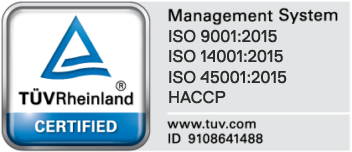
When it comes to e-liquid manufacturing, it is imperative to prioritize chemical storage safety. This comprehensive guide explores the best practices for chemical storage, ensuring that your e-liquid business not only complies with regulations but also establishes a strong foundation for workplace safety and environmental protection.
Learn more:
- How To Start And Grow E-Liquid Brand?
- Sustainable E-Liquid Manufacturing: A Guide for Brand Owners and Producers
- E-Liquid Manufacturing: Employees Safety and Well-Being
- Safe Usage Of Chemicals [Guide]
- Pharmaceutical Quality Of E-Liquids: What You Should Know?
- E-Liquid Manufacturing Standards: Tips For Producers And Brand Owners
- E-Liquid Manufacturers: Best Practices
Chemical Storage Best Practices: A Closer Look
Labels and Signs: Ensuring Compliance and Understanding
The first step in chemical storage is labeling — a crucial step before getting into the nuances. Ensure compliance and empower your team with essential knowledge by labeling containers with accurate information regarding substance names, properties, hazards, and precautions. This ensures compliance and empowers them.
Special Containers: Safeguarding Against Reactions and Leaks
It is imperative to mark chemical containers according to the UN standard, with pictograms, codes, and labels that outline hazards. Chemicals require specialized containers resistant to reactions and leaks. It adds an extra layer of protection to your employees and the environment to invest in high-quality, specialized containers.
Check also:
- Packaging, Storing And Transport: Why Are They Important For Product’s Quality?
- Storing And Handling Pure Nicotine And Nicotine Salts
- Natural Vaping Products: Bases, Nicotine, Flavorings
- The Differences Between Glycol And Glycerine: When To Use Which?
- PG/VG Ratio: How To Find The Best For E-Liquids
- OEM Services And Private & White Label: 9 Reasons To Choose Chemnovatic As The Best Business Partner
- E-Liquid & Vape Industry Regulations [Knowledge Base]
- Vaping Trends 2024: How Can They Help Grow Your Profitable Business?
- Beginner’s Guide To Vaping
- Vape Cartridges Knowledge Center
Proper Storage Conditions: Maintaining Integrity Over Time
The storage needs of chemicals vary depending on the substance.
Take temperature, humidity, and ventilation into consideration when storing chemicals. Keeping your chemicals in good condition over time requires understanding and following guidelines and standards for substances with specific storage requirements.
Separate Storage: Minimizing Risks of Unexpected Reactions
An essential aspect of chemical safety is storing substances separately, especially those that may react unexpectedly. This simple precaution reduces the risk of a runaway chemical reaction, promoting a safer working environment.
Learn more:
- E-Liquid Manufacturer Standards
- Nicotine Products: Storage and Handling
- Nicotine and Nicotine Products: Packaging, Storage, and Transport.
- Nicotine: Easy to vape, hard to handle
Staff Training: Empowering Your Team for Safe Handling
Your employees are the backbone of your operation. Ensure that those responsible for transporting and storing chemicals undergo comprehensive training in safety rules and procedures.
This not only enhances workplace safety but also instills confidence in handling chemicals correctly, mitigating the risk of accidents and exposure.
Authorized Access Only: Restricting Entry for Enhanced Safety
Limiting access to stored chemicals to authorized and trained personnel is crucial. This measure not only reduces the likelihood of accidents but also acts as a deterrent against potential theft or unauthorized handling. Controlled access contributes to a safer working environment.
Emergency Procedures: Swift and Effective Response
Despite meticulous safety measures, emergencies can occur. Establish and practice emergency procedures for spills, fires, or other dangerous situations. Proper training ensures that your team can respond effectively, minimizing the impact of unforeseen events.
Compliance in Transportation: Navigating Legal Waters for Chemical Safety
When transporting chemicals off-site, strict compliance with laws and regulations is non-negotiable. Adhere to the ADR agreement for land transport in Europe and IATA regulations for air transport. Stringent adherence to these regulations ensures both legal compliance and the safety of everyone involved in the transportation process.
Minimizing Risks: A Collective Effort for a Safer Industry
All regulations and guidelines share a common goal — minimizing risks and protecting people, the environment, and property during the movement of chemical substances. Recognize that these measures contribute to a collective effort to create a safer industry.
Commitment to Safety: Chemnovatic’s Assurance
At Chemnovatic, we prioritize the highest standards of safety in transport and storage. Our commitment to operating effectively revolves around minimizing risks, ensuring the protection of our employees, and preserving the environment. Adhering to stringent safety procedures and rules contributes to a healthier, safer industry.
We operate to strict HACCP standards – this is also confirmed by ISO 9001:2015 certification. What’s more, we have been audited by Intertek SQP, Intertek WCA, EcoVadis as well as by some of our major clients. We also regularly conduct internal audits and test our raw materials and final products in external and internal laboratories.
Chemical Storage Best Practices: Conclusion
Mastering chemical storage best practices is not just a regulatory requirement but a commitment to the well-being of your team and the environment. By implementing these comprehensive guidelines, your e-liquid business can ensure compliance while fostering a culture of safety that sets the stage for success. Safe chemical handling is not just a responsibility; it’s a cornerstone of a thriving and responsible industry.
Let’s grow your business together!
Subscribe to our newsletter and receive a free access to our e-mail course on raw materials for e-liquids production (and more!).
No spam, only valuable content we promise to send you.


















